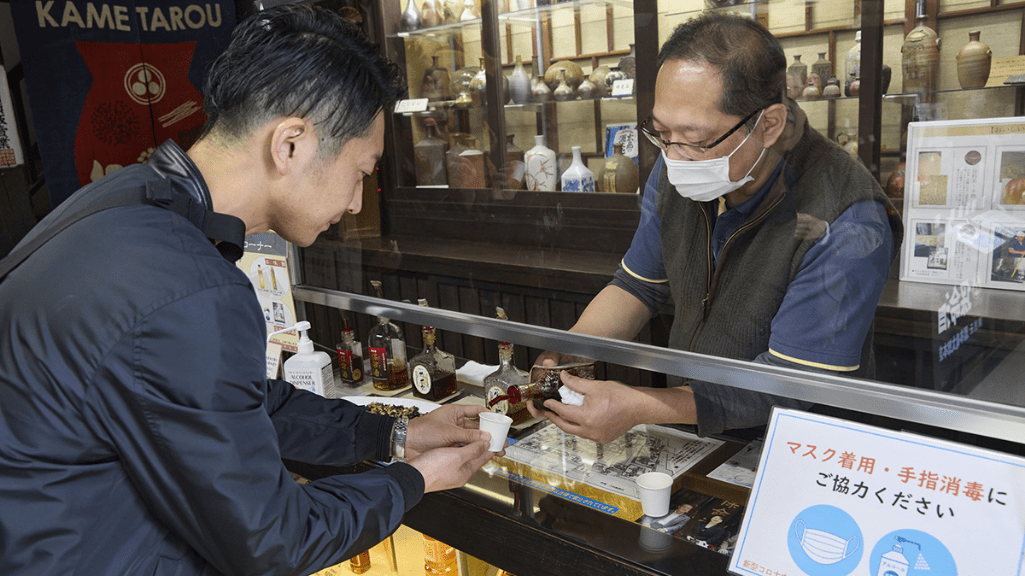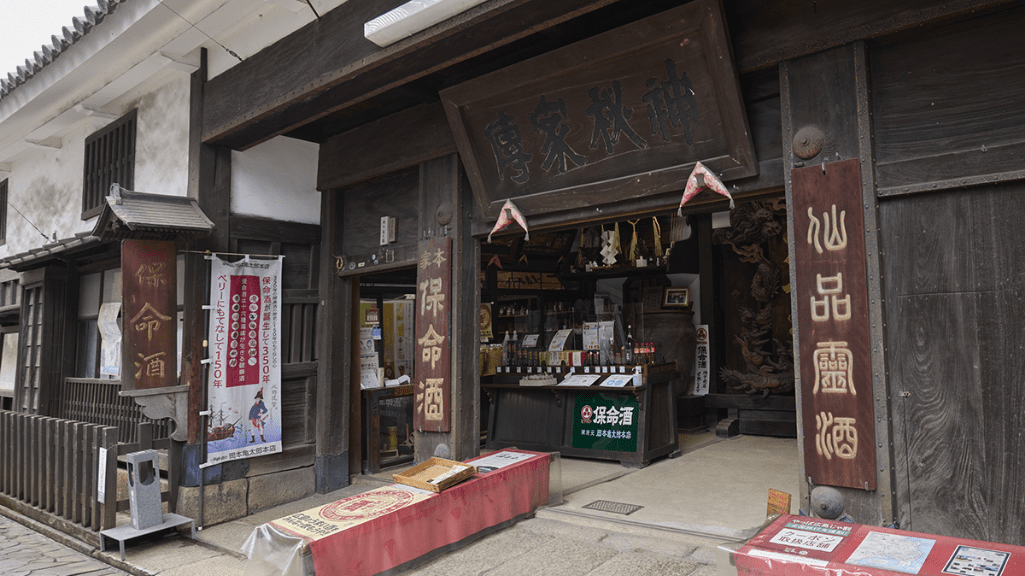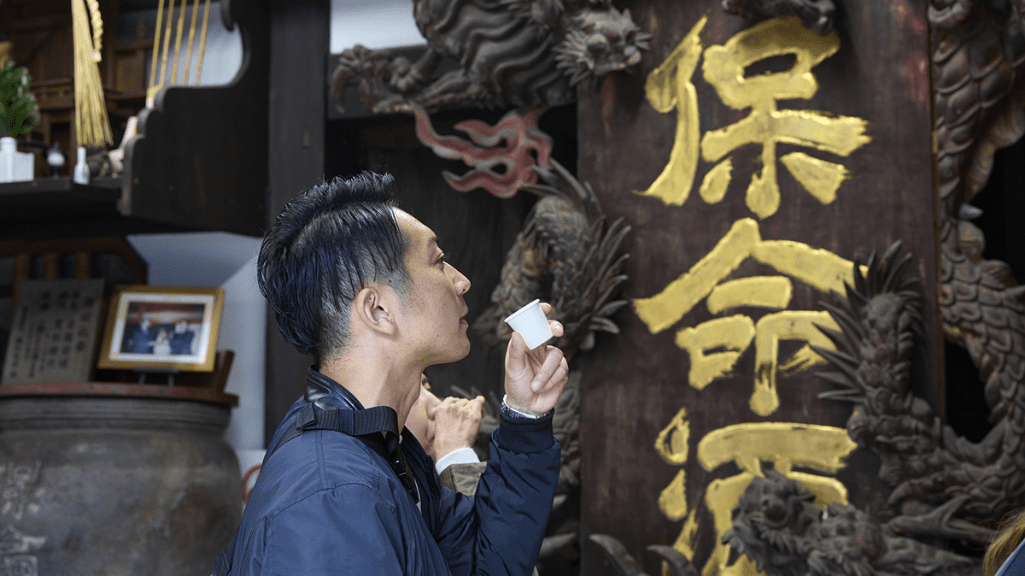DAY3 START
Okamoto Kametaro Honten
The original brewery of Homeishu and Hon-mirin (sweet sake). The company founded in the sake industry in 1855, and began making Homeishu in the Meiji period (1868 - 1912). Their large signboard with the dragon motif and the Kobizen pottery used for sake brewing were passed down from the Nakamura family, the original brewer of Homeishu, who had closed their business during the Meiji period. Both of them are worth a look along with the store, which is an important cultural property of the city, directly managed by the brewery.



1minutes on foot
Taisho-no-Sato
A spot to experience the extraordinary.You can enjoy your self-made “chikuwa” fish cakes that are hand-grilled by the craftsmen.Mix the Furikake to your preference to create your own blend to take home as a souvenir.Children and adults alike can enjoy hand-grilling the “Sea Bream Senbei Crackers.”



7minutes by car
Abuto Kannon (Bandaiji Temple)
It is said that "Eleven-faced Kannon stone Buddha" was enshrined on the rock by "Cloistered Emperor Kazan" for the safety of the sea in the area about 1000 years ago. The vermilion-lacquered "Kannon-do" which stands on the head of a rock on the cape, has been featured in Utagawa Hiroshige's Ukiyo-e and Shiga Naoya's "A Dark Night's Passage" for its beauty. Today, the Kannondo is designated as an "important tangible cultural property of Japan", and is widely worshiped by people as a place of childbirth and safe childbirth.



16minutes by car
Shinshoji Zen and Garden Museum
On the vast grounds, there is a 17th-century hall that was relocated from Shiga Prefecture, a restored tea room of "Sen no Rikyu". There are temple offices by using the pine plant that symbolizes the Seto Inland Sea area from the Sanyo Expressway designed by an architectural historian "Terunobu Fujimori" and an elaborate garden is arranged to connect the buildings. You can also experience the new Zen in contemporary world through the exhibition consisting of about 200 items from one of Japan's leading collections "Hakuin collection", and works at the art pavilion "Koutei" designed by contemporary artist Kohei Nawa and his creative group SANDWICH.











